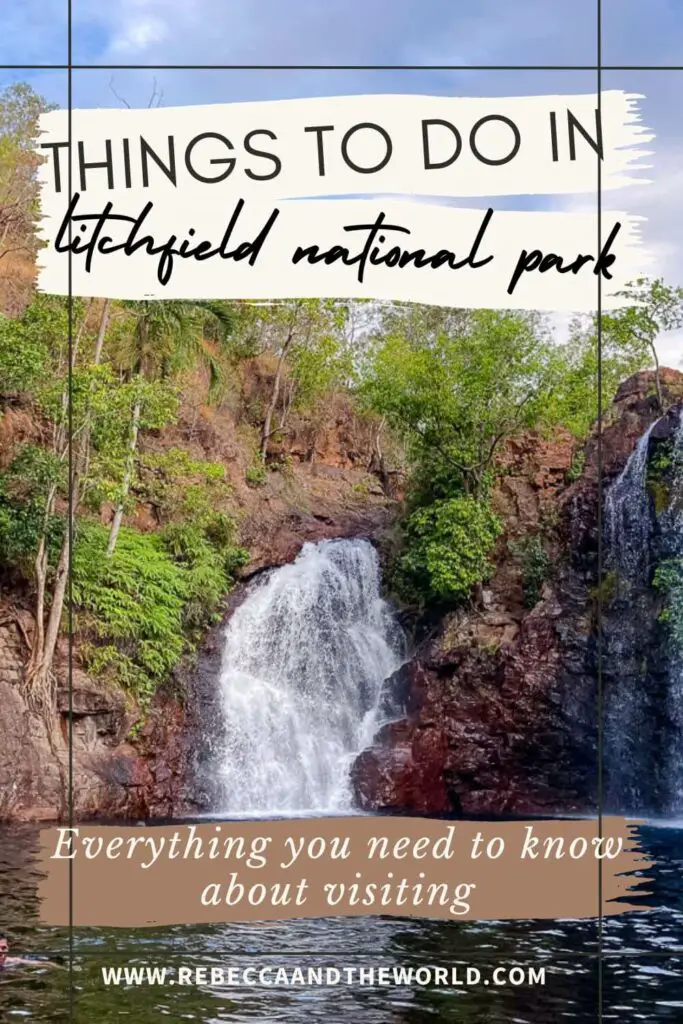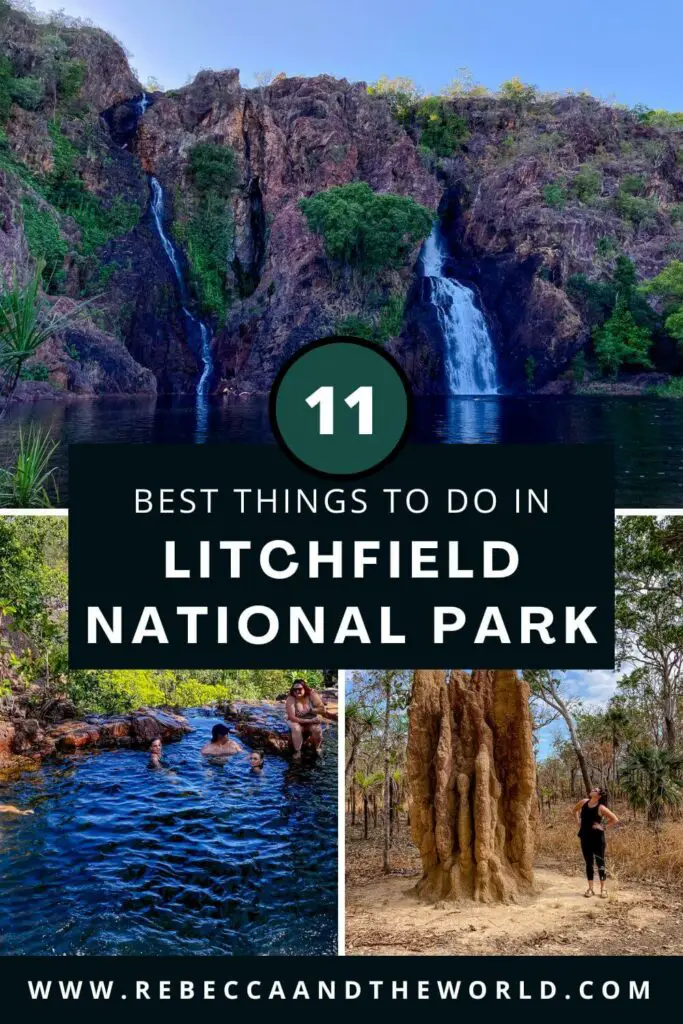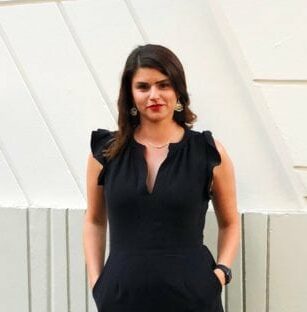I’ll make you a bet. If I were to ask anyone who’s been to the Northern Territory what their favourite national park is, I bet 99% of people would say Litchfield National Park. And for good reason too!
This is one of the territory’s – if not Australia’s – best national parks. It’s got gorgeous waterfalls, refreshing swimming holes, a range of walking trails and thrilling 4WD tracks. Plus, it’s easily accessible, just a 90-minute drive from Darwin.
While it’s entirely possible to visit the park on a day trip from Darwin, I encourage you to spend more time here. It was one of the highlights of our half-lap of Australia and we kept going back multiple times to our favourite watering holes.
Here are the top things to do in Litchfield National Park as well as my handy travel tips.
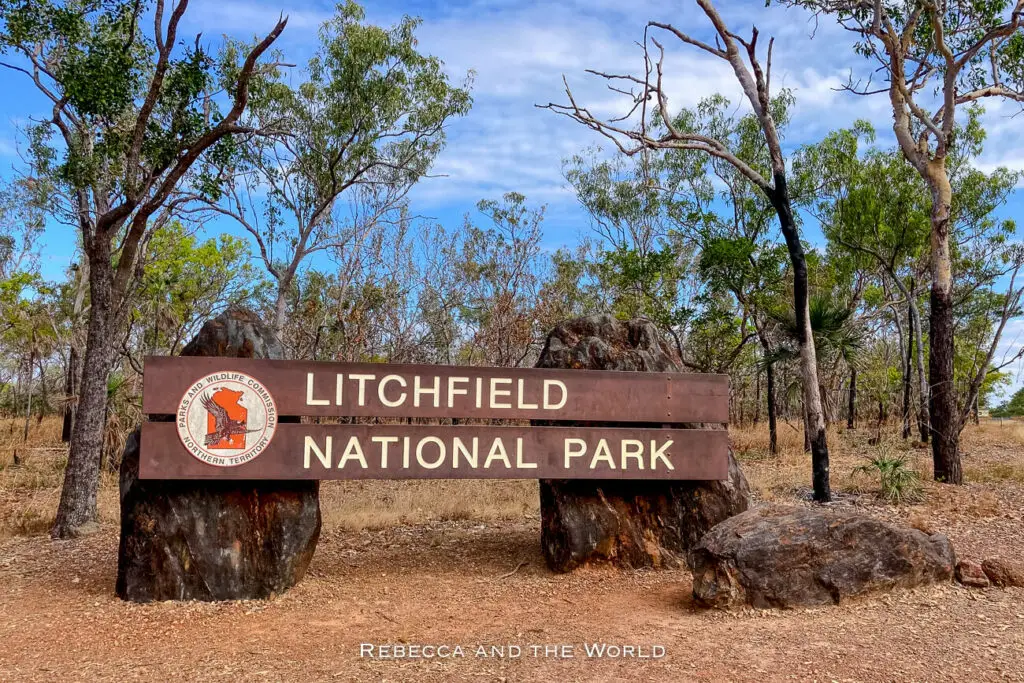
This blog post may contain affiliate links, meaning if you book or buy something through one of these links, I may earn a small commission (at no extra cost to you).
11 Best things to do in Litchfield National Park
Here are my favourite attractions in Litchfield National Park. Many revolve around the best swimming spots, so make sure you bring swimming gear and a pool noodle or floatie!
The great thing about Litchfield is that most of these sites are on the same road – which is sealed – so you can easily hop from one to the other. It’s one of the best things to see in the Northern Territory, so make sure you visit!
Important! If you’re not a resident of the Northern Territory, you’ll need to buy an NT Parks Pass. They’re available online here.
1. Wangi Falls
Wangi Falls is arguably the most popular attraction in Litchfield National Park. It’s a stunning double waterfall that flows into a large swimming hole, surrounded by lush vegetation. It’s one of my favourite waterfalls in Litchfield National Park.
The swimming hole under the falls is huge, so there’s usually plenty of space to float around even if it’s super busy (which it often is!).
I recommend swimming across the pool to find the small spa-like pool right by the bottom of the falls on the left side – it’s a little hidden spot that you can have to yourself if you’re quick.
There’s a cafe at Wangi Falls that’s open for lunch most days, but the selection is pretty slim – cheese and ham sandwiches for $10 and some hot meals. So, bring your own food and have a meal at the picnic tables or BBQs dotted around the lush grass area.
Top tip! Visit early. During the day, Wangi Falls is always PACKED. So if you want the place to yourself, head there before 9am. Our first trip to Wangi was the middle of the day and we couldn’t even find a spare patch of grass. On our second visit, we arrived around 8am. While the sun hadn’t quite heated the water yet, there were only about 10 people there.
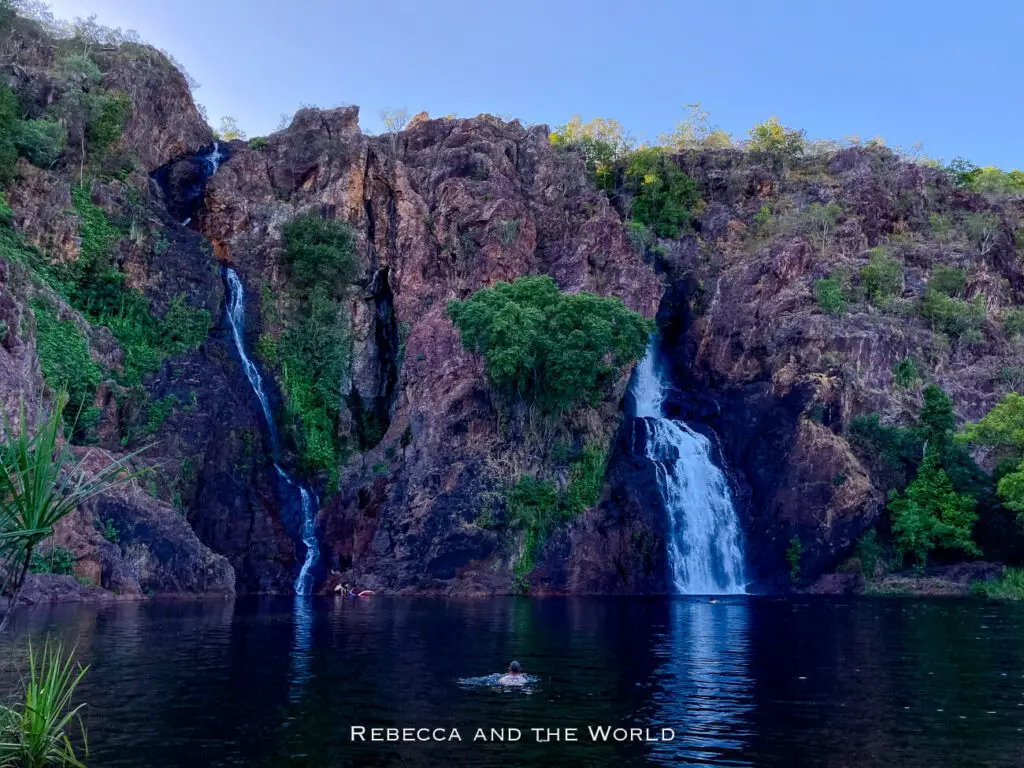
2. Florence Falls
Another favourite spot of mine in Litchfield National Park is Florence Falls. This stunning double waterfall flows into a large swimming hole, surrounded by towering cliffs and lush greenery. It feels like you’re on the set of a movie.
There are steps into the pool and from there you can see just how majestic the two waterfalls are. Swim over to the falls and behind the sheet of water.
There are two ways to get to Florence Falls: you can take the 1.1km walk through a monsoon forest or descend (which of course means that you later have to ascend…) 135 steps down to the pool. We chose the stairs, which was quicker but definitely a thigh burner coming back up.
Once you’re down at the pool, there’s not a lot of space to spread out – you’ll need to leave your stuff in amongst the boulders, so it’s not the best place for a picnic.
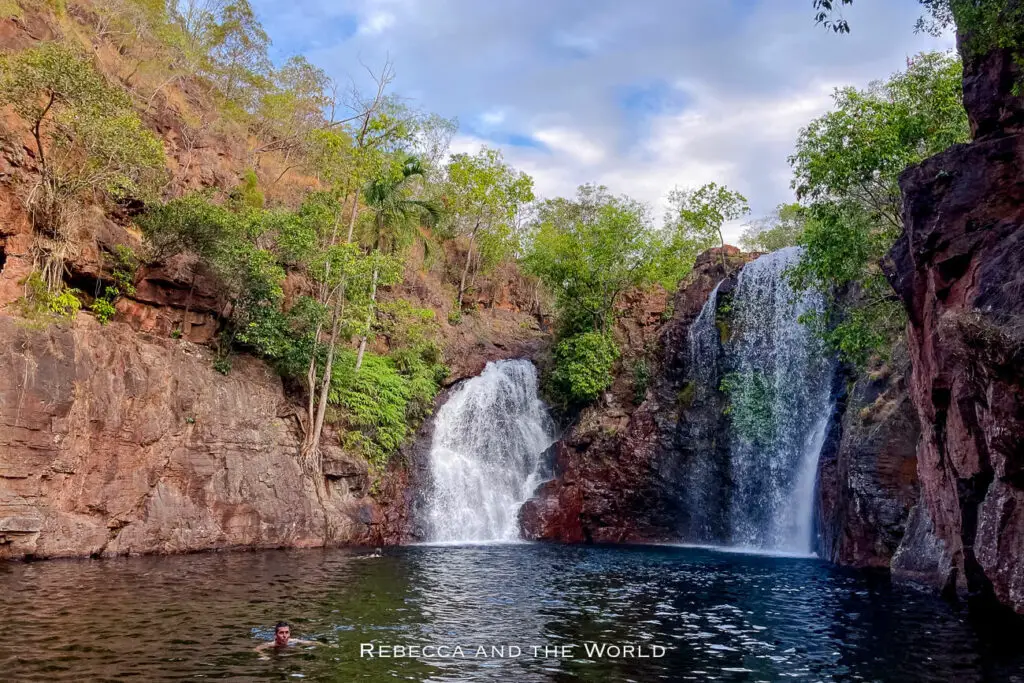
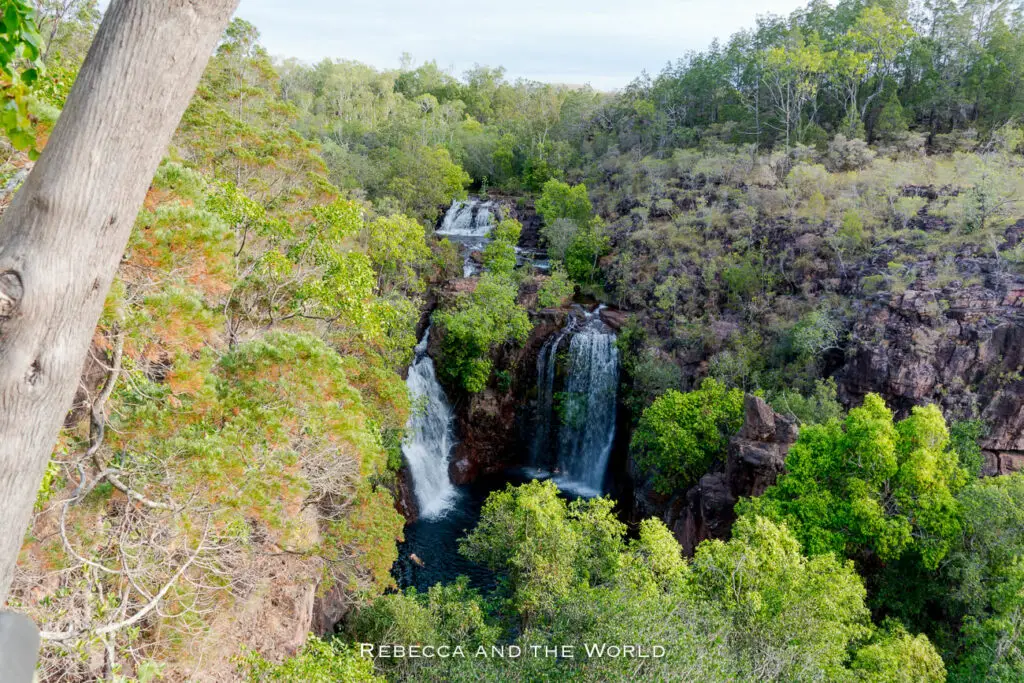
3. Buley Rockhole
Located near Florence Falls, Buley Rockhole is also very popular (by now, you’re probably thinking what isn’t popular?!). This beauty is made up of a series of tiered pools, and it’s the perfect place to cool off on a hot day. The water here is ridiculously clear and refreshing.
Each of the pools varies in size and depth, so find the spot that suits you best. I recommend going early in the morning to nab a good spot for the day!
When we visited Buley Rockhole, there was a food van selling sausages and soft drinks, just in case you need to fuel up. It looked like a local business run by some young entrepreneurs, so hopefully they’re still around!
Top tip! You can walk between Buley Rockhole and Florence Falls, So, on a busy day, don’t move your car from one car park to the other (and risk not getting a space) – just walk the paved, 1.7km trail between the two. There are even watering holes and places to picnic between the two sites – and they’ve usually got fewer people using them.
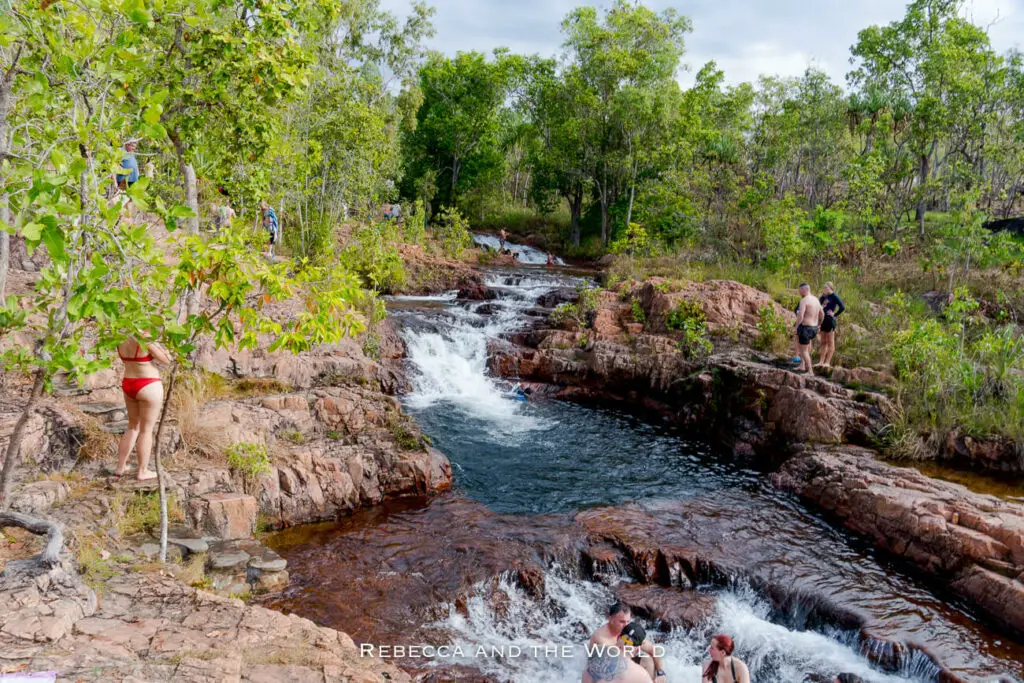
4. Cascades
To get to these beautiful cascading pools requires a pretty tough hike. While it’s only 3.6km return, it’s a Grade 4 hike that’s steep, rocky and exposed.
But it’s all worth it! And it seems like the tough hike puts many people off – this was the quietest of the watering holes in Litchfield National Park we visited.
There are two levels of the Cascades. The Lower Cascades was closed when we visited (the trail needs repair) but the Upper Cascades are a series of watering holes in the rocky surface, culminating in a large plunge pool at the end.
I’d definitely recommend tackling the trail to get here if you’ve got the energy. Wear proper shoes rather than thongs/flip flops because the ground is loose rocks in many parts and very steep.
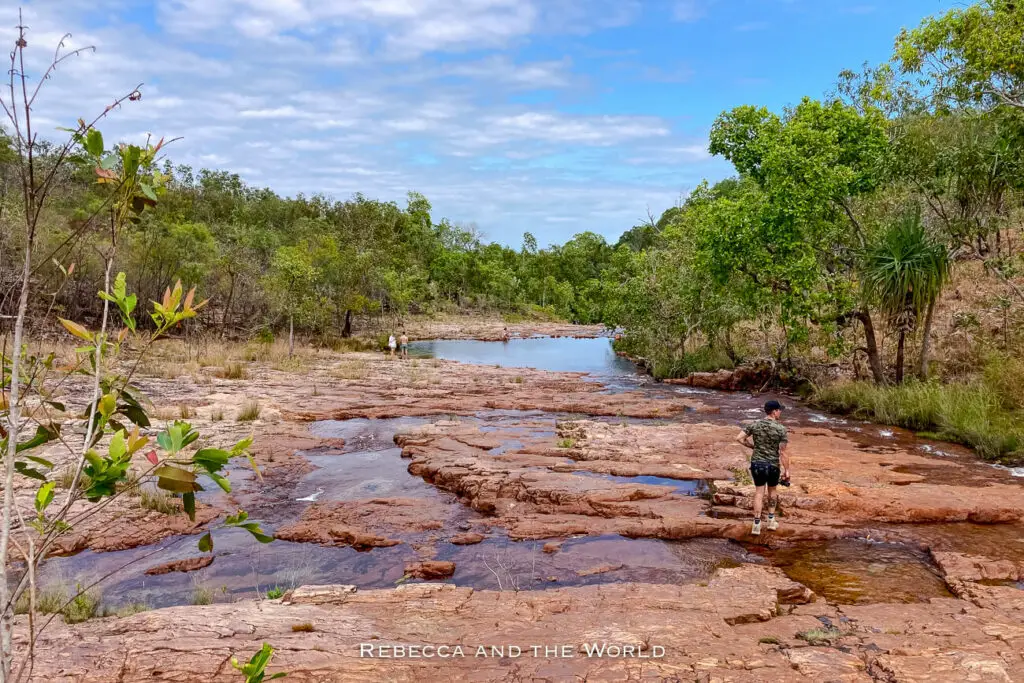
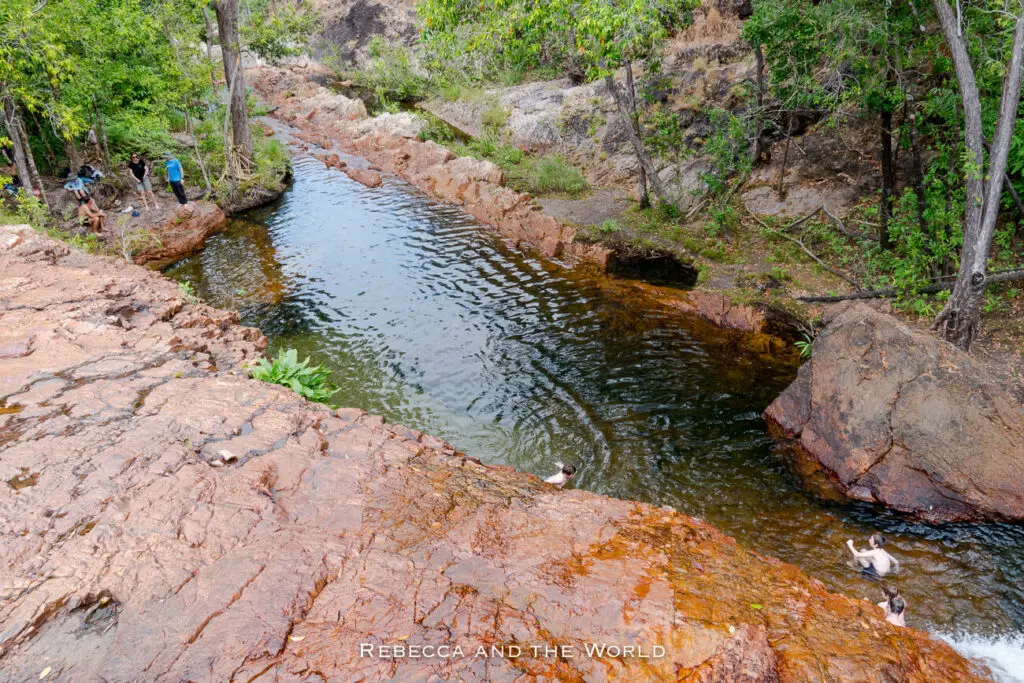
5. Tolmer Falls
Tolmer Falls is one of the few waterfalls in Litchfield National Park that you can’t swim in. But you can get some great views of this majestic waterfall.
You can head straight to the viewing deck, but I think the Tolmer Creek Walk (1.5km loop) is worth doing. The trail loops through lovely woodlands and cycads (one of the oldest plants on the planet, they remind me of mini palm trees). The walk passes Tolmer Creek which leads to Tolmer Falls – so you get to see the source of the waterfall.
The waterfall feels really secluded – standing there, I imagined what it must have been like being the first person to see it!
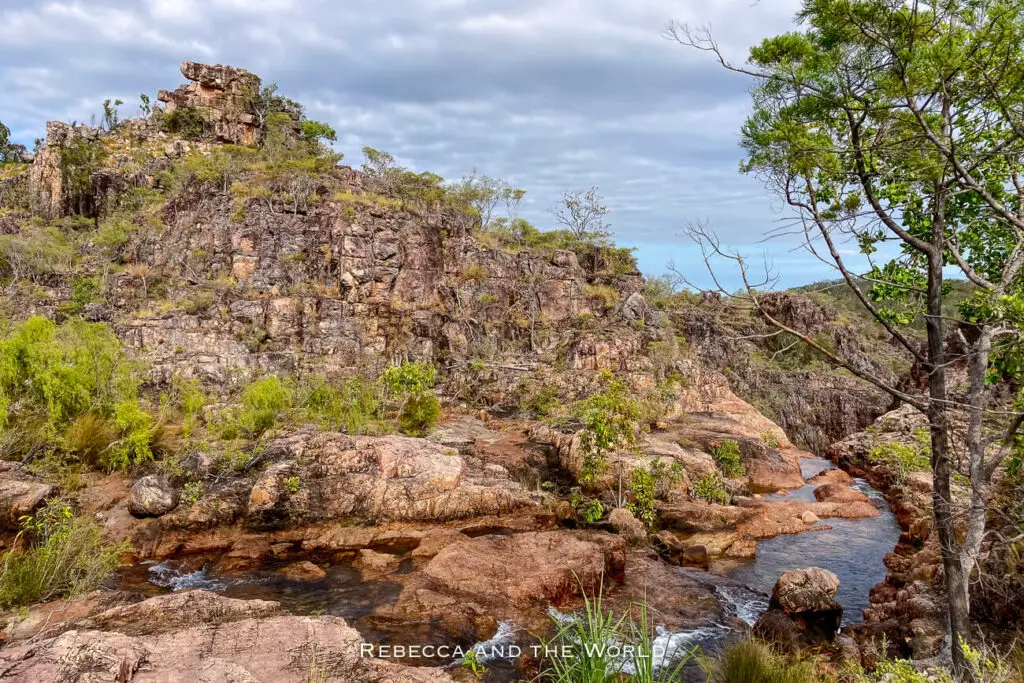
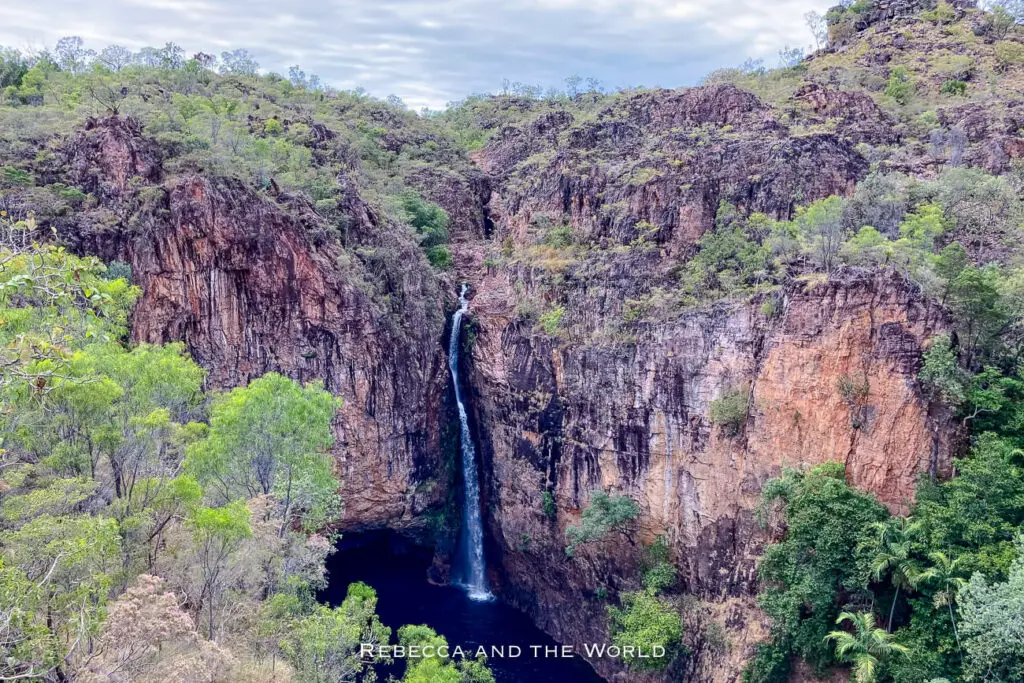
6. Tjaetaba Falls
We loved Tjaetaba Falls! The 2.7km return hike to the falls is fairly easy – although it is steep and rocky at the end.
The trail follows Greenant Creek (a sacred site so don’t swim here). It starts in a monsoon rainforest which then abruptly ends and transitions back to Savanna woodland. The contrast between the two is sharp and you can immediately feel the temperature change as you step from one to the other.
The trail leads to a lookout across to the falls. But continue up and you can sit in the plunge pool that feeds the pools. It’s not a huge area, so it can feel crowded even when there’s only a handful of people there. It’s a beautifully refreshing pool – although the kids doing bombs into the water around us ruined the tranquillity somewhat!
If you’ve got some energy to burn, you can actually continue from Greenant Creek to Wangi Falls (8.4km) or Florence Falls (22.5km).
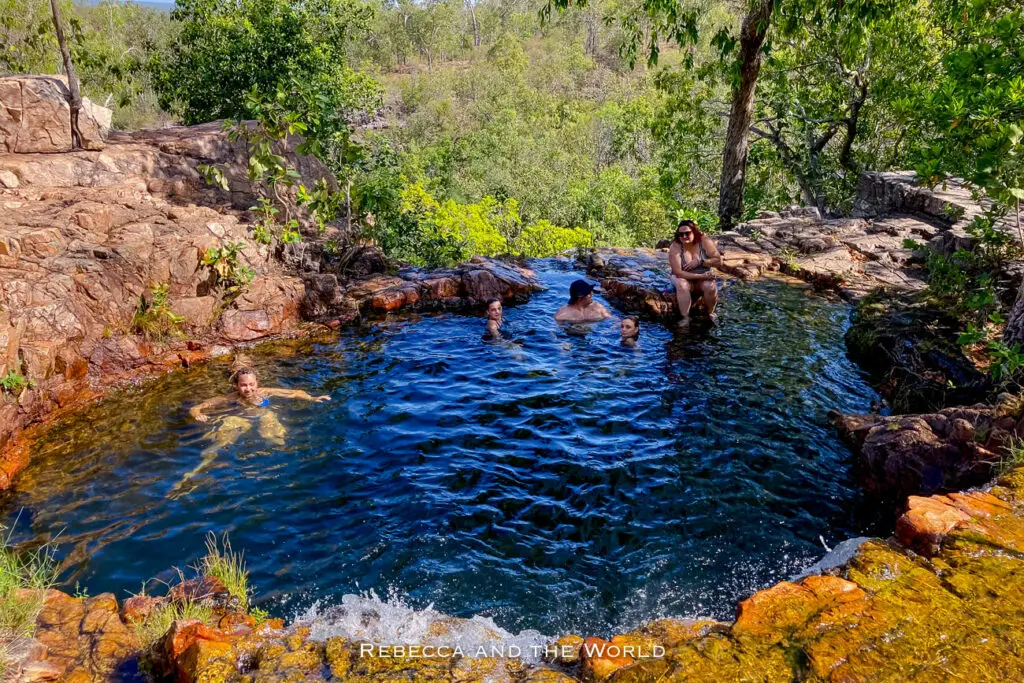
7. Magnetic Termite Mounds
The Magnetic Termite Mounds are one of the first things you’ll see when you enter Litchfield National Park from Batchelor.
At the Magnetic Termite Mounds site there are two viewing platforms. One surrounds a 4-metre-tall, cathedral-like mound while the other looks out over a green field filled with tombstone-like mounds.
The tombstone mounds are called “magnetic” because they point north, built in such a way by the termites to control temperature and humidity inside the mound.
The cathedral mounds are huge – you can see how they get their name! Some stand 4 metres high, and it’s impressive to think how these termites have banded together to create them.
I actually found it hard to get a good picture of the mounds here, so stop by any of the huge mounds you’ll see along Litchfield Park Road – just don’t touch them!
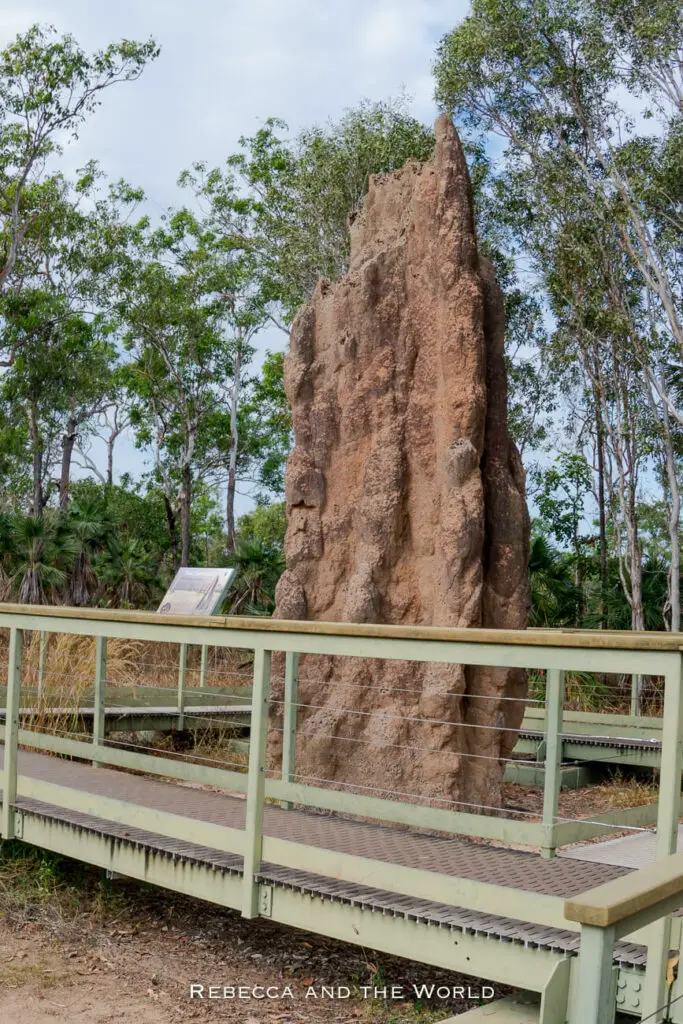
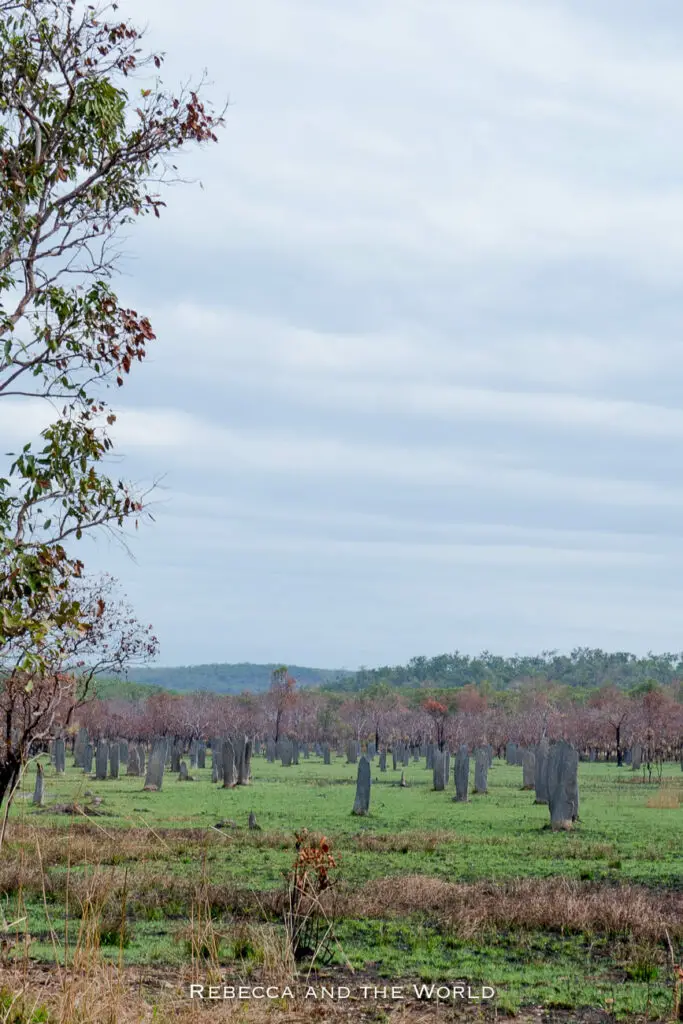
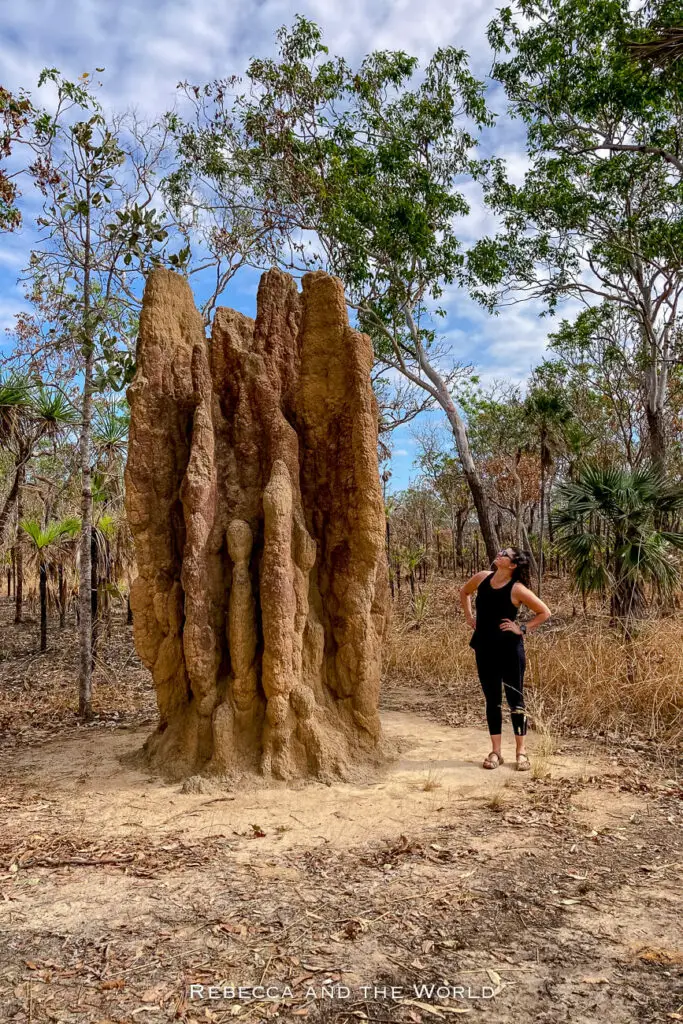
8. Walker Creek
Almost at the end of Litchfield Park Road (if you’re coming from Batchelor), Walker Creek is one of the most chill spots in Litchfield National Park.
Most people tend to focus on the highlights – Wangi Falls, Buley Rockhole, Florence Falls – but if you want a bit of peace and quiet, then head to Walker Creek.
Walker Creek is just as beautiful as Buley Rockhole – without the crowds. Walk the trail and take your pick of the swimming holes. You could easily spend the whole day here with a picnic and good friends.
9. The Lost City
Litchfield is known for its 4WD trails – The Lost City, Tjaynera Creek and Surprise Creek Falls are the best 4WD tracks.
Unfortunately, Tjaynera Creek and Surprise Creek Falls were closed when we were there, so we tackled The Lost City. As the name suggests, the highlight of this track is the sandstone formations that resemble an ancient Mayan empire.
The 11km track there is pretty straightforward with a few deep spots, so you will need some basic 4WD experience – and a 4WD! The track is only wide enough for one vehicle, so be patient. We saw one car bust their fuel line because they tried to move out of the way of a van and it got caught on a big stick.
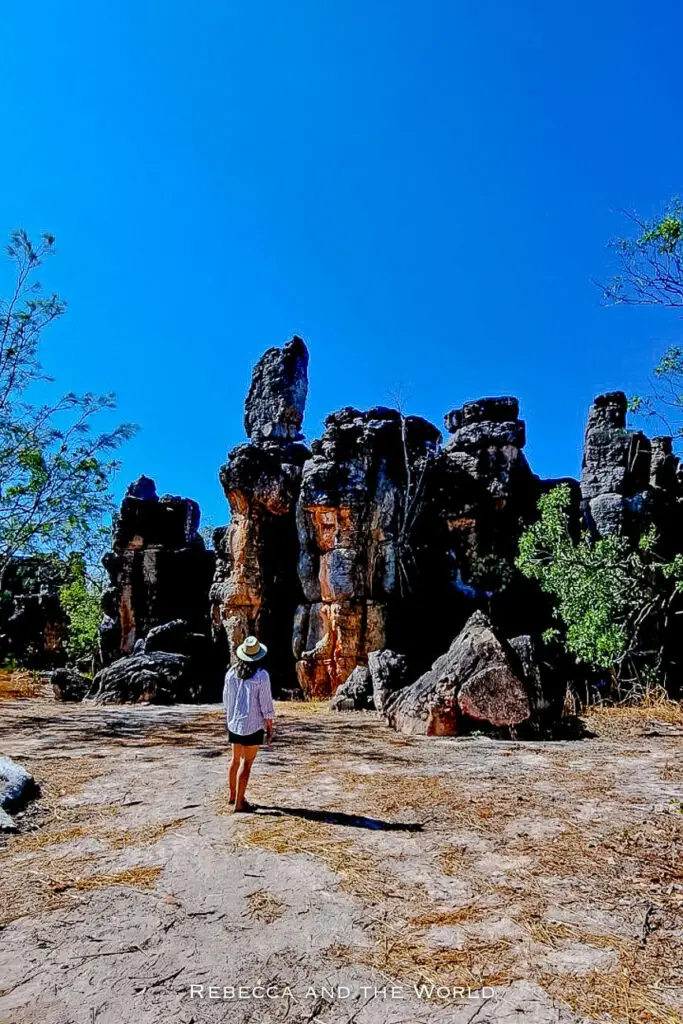
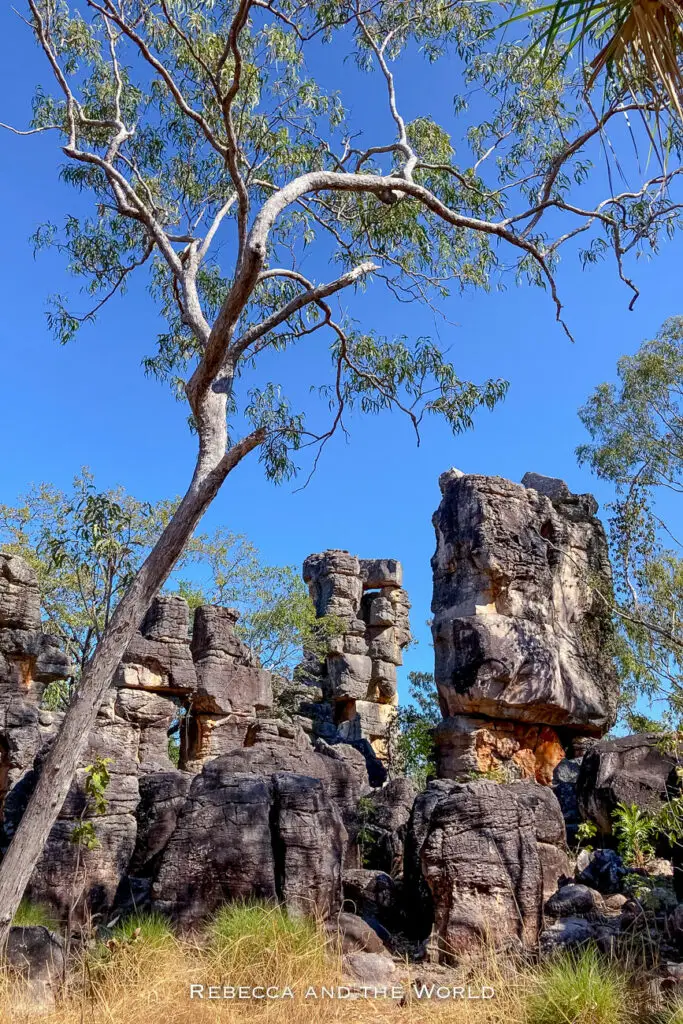
10. Tabletop Swamp
Tabletop Swamp is a hidden gem in Litchfield National Park that often gets overlooked by tourists. While it’s well-signed, it’s a little off the beaten track, and the detour is well worth it for birdwatchers.
The billabong is home to a variety of bird species, including waterbirds like egrets, ibises and herons, as well as forest birds like kingfishers honeyeaters, and parrots.
Aside from birdwatching, Tabletop Swamp is a great place for a picnic.
11. Bamboo Creek Tin Mine
If you’re over waterfalls and swimming (but really, how could you be?) then change it up and visit the Bamboo Creek Tin Mine.
Right on the edge of the northwest part of the national park, this abandoned mine was in operation from 1906 until 1955 and now stands as a historical site.
You can wander through the buildings and see some of the old machinery that’s been left behind.
Tips for visiting Litchfield National Park
Here are a few things to prepare for when you visit Litchfield.
Phone coverage is pretty nonexistent. I was surprised at how little coverage there was for all networks. So prepare to get off-grid and enjoy your surroundings, as you’ll have no choice. You can’t really get lost so don’t worry about not having maps – the park is pretty much one road in and out.
Bring food and snacks. There are limited facilities in the park, so bring plenty of food, snacks and water with you. I highly recommend packing a picnic – there are some great spots around the park to enjoy lunch.
What to pack for your visit
Here are a few things you should bring on your visit.
- NT Parks Pass
- Snacks, lunch and plenty of water
- Hiking boots or sneakers, if you’re planning to do the tougher hikes (like the Cascades) – otherwise sneakers or Tevas are fine
- Water bladder or water bottle
- Plenty of sunscreen, minimum SPF50+
- Hat and sunglasses
- Day pack
- Swimming gear – you’ll be wearing your bathers every day here!
- Dry bag so you can take your phone/camera into the water with you for pics
- Pool noodle or inflatable – a must for the swimming holes!
Where is Litchfield National Park?
Litchfield National Park is located in the Northern Territory, Australia, approximately 100 kilometres southwest of Darwin. The park is easily accessible by car or organised tour. There’s no way from Darwin to Litchfield National Park by public transport.
If you’re planning to drive to Litchfield National Park, rent a car in Darwin. It’ll take you around 1.5 to 2 hours from Darwin, depending on traffic and stops along the way. You can enter the park via Batchelor or via the Cox Peninsula Road (before turning off onto Litchfield Park Road). Which way you enter will depend on where you’re staying and where in Litchfield you want to stop first.
I highly recommend adding Litchfield to your Adelaide to Darwin itinerary or Top End road trip.
There are also several tours from Darwin, ranging from day trips to multi-day excursions.
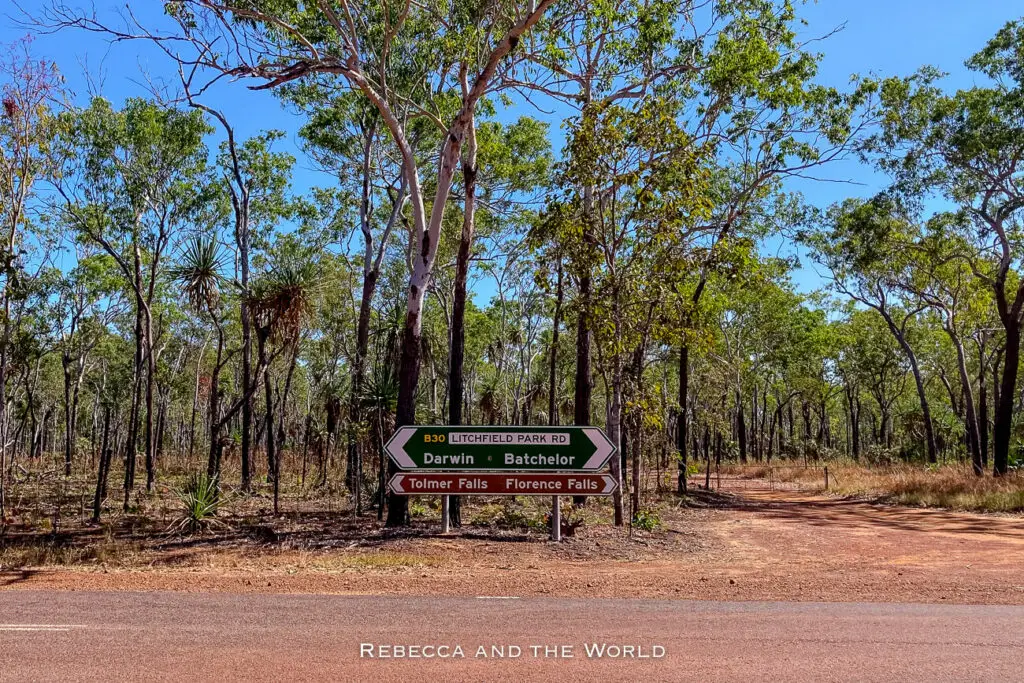
Tours from Darwin to Litchfield National Park
While I recommend spending a few days at Litchfield, you can take a day trip. Here are a few of the best Darwin to Litchfield tours:
Litchfield National Park and Jumping Crocodile Cruise
The Litchfield National Park and Jumping Crocodile Cruise leaves from Darwin and starts with a cruise on the Adelaide River for an up-close view of crocodiles in their natural habitat (from the safety of your boat!). The tour continues to Litchfield National Park, where you’ll cool off in the beautiful swimming holes at Florence Falls, Wangi Falls and Buley Rockhole. Lunch, snacks and water are included. Check rates and availability online here.
Litchfield Day Tour from Darwin
This day tour from Darwin with Offroad Dreaming is a highly recommended full-day adventure. It starts with visits to Florence and Wangi Falls, a refreshing swim in the Buley Rockhole and a stop at the Magnetic Termite Mounds. The tour ends with a crocodile-spotting cruise on the Adelaide River before heading back to Darwin. The tour includes hotel pick-up and drop-off, a professionally guided experience and a picnic lunch, snacks and water. Check rates and availability online here.
Best time to visit Litchfield National Park
The best time to visit Litchfield National Park is during the dry season, which runs from May to September. There’s less chance of rain, which means most waterholes will be open. While it’s “cooler” during this time of the year, daytime temperatures can still reach 30 degrees, so you’ll be making the most of those swimming holes to cool off!
During the wet season, which runs from October to April, many areas of the park are closed due to heavy rain and potential flooding – and the threat of salties (saltwater crocodiles) coming in. However, this is also when waterfalls are at their most spectacular, so if you don’t mind braving the heat and humidity, it’s still worth a visit. Just make sure to check road closures before heading here.
Accommodation in Litchfield National Park
Whether you prefer to stay in luxury lodges or camp under the stars, Litchfield National Park has accommodation options for every type of traveller.
Glamping
The Litchfield Safari Camp is in a great location on the western side of the park, about a 10-minute drive from Wangi Falls – so you can be up early to get there before everyone else! There are safari tents with kitchenettes and ensuites, comfy cabins, and powered and unpowered sites for caravans and campers. Check rates online.
Hideaway Litchfield has luxury cabins built from shipping containers, each named after a place in Litchfield. There are also cosy huts with a shared bathroom and camp kitchen. It’s close to Wangi Falls, too. Check availability online here.
Caravan parks and cabins
We stayed at Litchfield Tourist Park, which has cabins and caravan/campsites. The caravan sites are generously sized and shaded. There are also cabins and even a 3-bedroom homestead for those travelling in a group. There’s a pool and cafe on site. It’s about a 45-minute drive to Wangi Falls from here. Check rates and availability online
The Banyan Tree has a mix of caravan/camping sites, cabins and motel-style rooms. We had a drink at the bar, which is under a huge Banyan Tree that’s beautifully lit up with fairy lights. There’s regular live music and a swimming pool. Check rates online
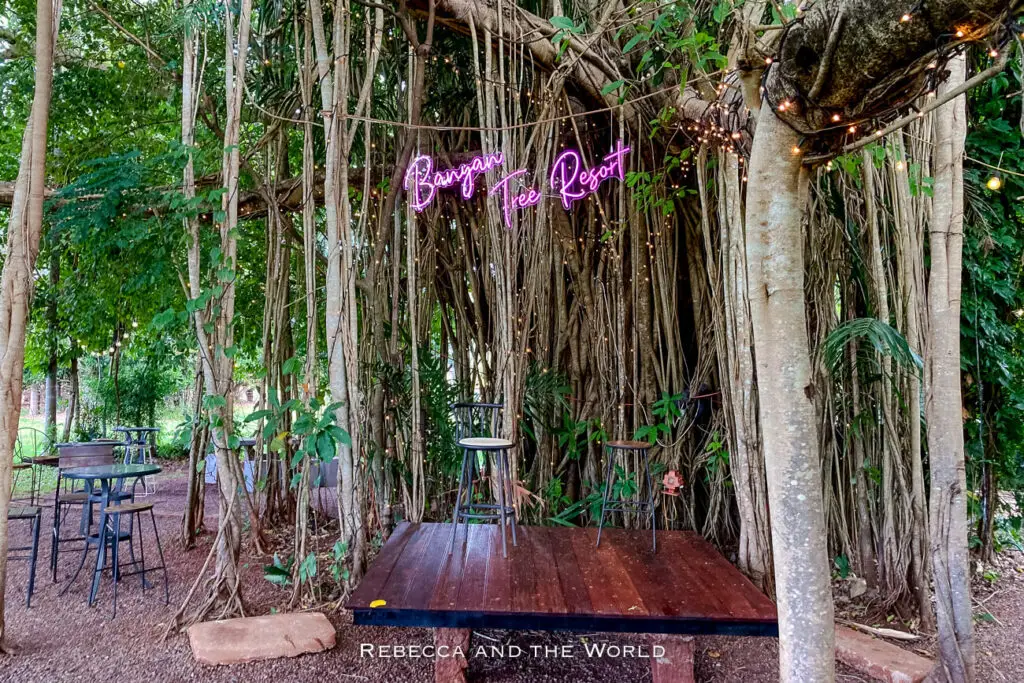
Camping in Litchfield National Park
There are also several camping areas within the park. Popular spots include Florence Falls Campground and Wangi Falls Campground – you’ll need to book online in advance to get a spot.
Other campgrounds are Central Valley, Walker Creek, Surprise Creek Falls (4WD access only) and Tjaynera Falls (4WD only). Each campground has different facilities – some have flushing toilets and showers while others have pit toilets, so check before you book.
Final advice for visiting Litchfield National Park
With its stunning waterfalls, refreshing swimming holes, and diverse wildlife, it’s no wonder that Litchfield National Park is one of the best national parks in Australia. Armed with the information I’ve provided in this article, you’ll be able to visit the park and plan out the perfect trip.
Litchfield National Park: FAQs
Is Litchfield National Park open?
Good question! Parts of the park can close from time to time – even in the peak tourist season – so always check the park’s website for the latest info about road and site access.
Are there crocodiles in Litchfield National Park?
Yes, there are crocodiles in Litchfield National Park. However, the majority of swimming holes are designated as “croc-free” zones, meaning they’re regularly monitored (and cleared of crocodiles if necessary). ALWAYS swim in designated areas and avoid swimming at dusk or dawn, when crocodiles are most active.
Having said that – the week after we were in Litchfield, a saltie bit a man on the arm while he was swimming in Wangi Falls. It was a reminder that saltwater crocs don’t just swim in saltwater.
Do I need a 4WD to visit Litchfield National Park?
No, a 4WD isn’t necessary to visit Litchfield National Park. Most of the main attractions are accessible by regular 2WD vehicles. However, if you plan on exploring some of the more remote areas or off-road tracks, then you’ll need a 4WD.
How many days do I need to visit Litchfield National Park?
Some people may be content with a day trip from Darwin to Litchfield National Park, but I think you need at least two full days here. Two days here means you can visit all the main waterfalls and swimming holes and have some time for hiking without feeling rushed.
Is there an entrance fee for Litchfield National Park?
Yes, if you’re not a resident of the Northern Territory you need an NT Parks Pass to enter Litchfield National Park. The pass is currently $30 per adult for a 2-week pass or $10 for a day pass. You can also purchase an annual pass for $60 if you plan on visiting multiple times throughout the year. The pass is valid at all NT national parks (except Kakadu National Park).
Are dogs allowed in Litchfield National Park?
No, dogs aren’t allowed in Litchfield National Park except for service animals.
Can you visit Litchfield National Park in the wet season?
Yes, you can visit Litchfield National Park during the wet season. It’s completely different to dry season and you’ll see the waterfalls in full flow. However, before you head out, check road conditions and closures – some areas close due to flooding.
Which is better, Litchfield National Park or Kakadu National Park?
It’s hard to compare the two as they are both so unique! I love Litchfield National Park for its swimming holes and waterfalls, while Kakadu National Park has amazing cultural experiences and wildlife viewing. Try to visit both national parks to get a well-rounded experience of the Top End. Both have their own appeal, so it’s difficult to say that one is “better”.
Did you find this article helpful? Consider buying me a coffee as a way to say thanks!
Have you visited Litchfield National Park in the Northern Territory? What’s your favourite swimming hole or waterfall?
Related posts
Before you go… you might like these Australia travel blogs:
- The ultimate guide to Nitmiluk National Park
- How to plan a Kakadu National Park itinerary
- 10 best things to do in Katherine, NT
- What to do at Ikara-Flinders Ranges National Park
- 75+ things to add to your Australia bucket list
- The best things to do at Uluru
- How to spend a few days in Alice Springs
AUSTRALIA TRIP ESSENTIALS
- Book your flight to Australia online with Skyscanner. I like this site because it shows me which dates are cheaper.
- Find a great hotel in Australia. Check prices on Booking.com and Expedia online.
- Check out the huge range of day tours throughout Australia on GetYourGuide or Viator. There’s something for everyone.
- A copy of the Lonely Planet guide to Australia will be handy.
- One thing I always purchase is travel insurance! Travel Insurance Master allows you to compare across multiple policy providers, while SafetyWing is great for long-term travellers and digital nomads.
- Pack sunscreen (look for SPF50 or higher), a hat and sunglasses because the sun is hot!
PIN IT FOR LATER
Save this guide to the best things to do in Litchfield National Park to Pinterest for later.
